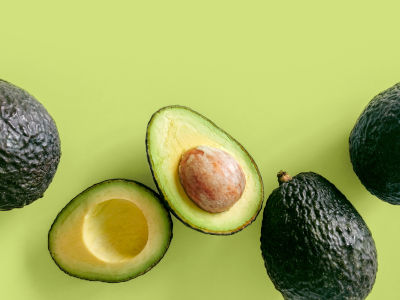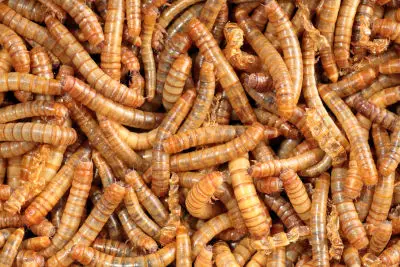When to Stop Using a Heat Lamp: A Guide for Pet Owners
When it comes to raising baby chicks, providing them with warmth is crucial to their survival. Heat lamps are commonly used to keep the chicks warm and comfortable. However, it is important to know when to stop using a heat lamp to prevent any potential dangers.
As chicks grow and develop feathers, their need for heat decreases. It is recommended to gradually decrease the temperature of the heat lamp by 5 degrees each week until the chicks no longer need it. This usually occurs around 6-8 weeks of age, depending on the breed and environmental conditions.
| Are these foods dangerous for your Beardie? | |
| Avacado? Click here to learn, from this guide, if this food is dangerous |  |
| Superworms? Click here to learn, from this guide, if this food is dangerous |  |
Continuing to use a heat lamp past the point when chicks no longer need it can lead to overheating, dehydration, and even death. It is important to monitor the temperature and behavior of the chicks to determine when it is appropriate to stop using a heat lamp.
Understanding Heat Lamps
Heat lamps are a common tool used to provide warmth to animals, plants, and people. They are often used in outdoor settings to keep animals warm during the winter months or to provide supplemental heat to plants in greenhouses. Heat lamps are also used in food service settings to keep food warm.
Purpose of Heat Lamps
Click here for the price, on Amazon #Ad
The primary purpose of a heat lamp is to provide warmth. Heat lamps produce infrared radiation, which is absorbed by objects and converted into heat. This makes them an effective tool for providing warmth to animals, plants, and people.
In addition to providing warmth, heat lamps can also be used to dry out damp areas and to speed up the drying process for paint and other materials.
Heat Lamp Safety
While heat lamps can be a useful tool, they can also be dangerous if not used properly. Here are some important safety tips to keep in mind when using a heat lamp:
- Keep the heat lamp away from flammable materials such as bedding, hay, and straw.
- Make sure the heat lamp is securely fastened and cannot fall or be knocked over.
- Use a heat lamp with a safety guard to prevent accidental contact with the hot bulb.
- Do not use a heat lamp in a wet or damp environment.
- Never leave a heat lamp unattended.
By following these safety tips, you can safely and effectively use a heat lamp to provide warmth and comfort to animals, plants, and people.
Identifying When to Stop Using a Heat Lamp
When using a heat lamp, it is important to know when it is time to stop using it. Here are some signs to look out for:
Signs of Overheating
One of the most obvious signs that it is time to stop using a heat lamp is when it starts to overheat. Overheating can cause the lamp to become too hot, which can lead to a fire hazard. If the lamp feels too hot to the touch or if it emits a burning smell, it is time to turn it off and let it cool down. Additionally, if the lamp is causing the surrounding area to become too hot, it is time to stop using it.
Lamp Lifespan
Heat lamps have a limited lifespan, and it is important to replace them when they reach the end of their usable life. The lifespan of a heat lamp depends on the quality of the lamp and how often it is used. Generally, a heat lamp should be replaced every 6-12 months. If the lamp is used more frequently, it may need to be replaced more often.
Knowing when to stop using a heat lamp is important for the safety of both people and animals. By paying attention to signs of overheating and the lifespan of the lamp, you can ensure that you are using the heat lamp safely and effectively.
Alternatives to Heat Lamps
While heat lamps are a popular choice for providing warmth to animals, they are not the only option available. Here are a few alternatives to consider:
Ceramic Heat Emitters
Ceramic heat emitters are similar to heat lamps in that they emit heat, but they do not produce light. This can be beneficial for animals that require a dark environment to sleep. Ceramic heat emitters are also more energy-efficient than heat lamps, making them a more cost-effective option.
Radiant Heat Panels
Radiant heat panels are another option for providing warmth to animals. They work by emitting infrared radiation, which heats objects and animals directly rather than heating the air around them. This can be a more efficient way to provide warmth, as it does not waste energy heating the air.
Heating Pads
For animals that require a lower level of heat, heating pads can be a good alternative to heat lamps. Heating pads can be placed under bedding or in a designated area for the animal to rest on. They are a safe and effective way to provide warmth without the risk of burns from a heat lamp.
Environmental Modifications
In some cases, environmental modifications can be made to provide warmth to animals without the need for additional heating sources. This can include adding insulation to enclosures, using heated flooring or bedding, or moving animals to a warmer location within the building.
Overall, there are several alternatives to heat lamps that can be used to provide warmth to animals. It is important to consider the specific needs of the animal and the environment they are in when choosing a heating source.
